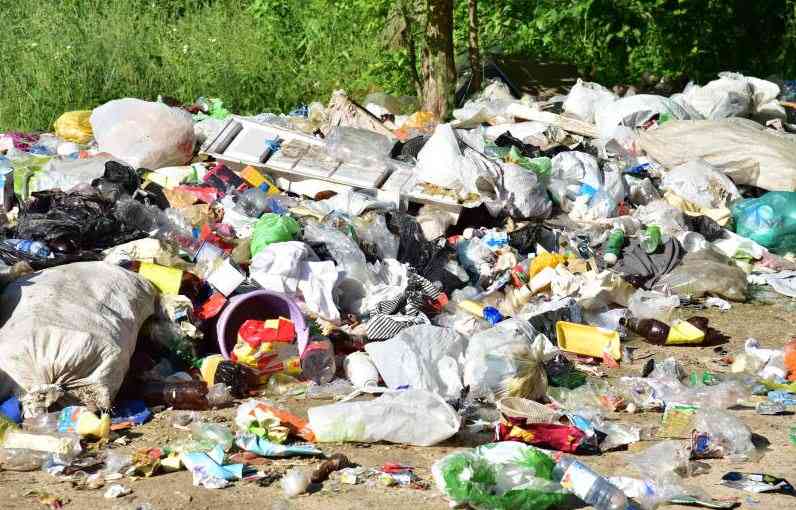Kilifi farmers count losses as milk goes to waste over lack of storage

At Gede village in Kilifi County, Alfred Mukare stands helplessly beside a bucket full of fresh milk, fearing that it could go bad due to the soaring heat.
Mukare, a retired civil servant, ventured into dairy farming in 2000 with just one Ayrshire cow, a Scottish breed known for producing around 15 litres of milk daily.
Milk from Ayrshire cows is among the best, with a butterfat content of 4.13 per cent and a protein content of 3.30 per cent. However, the milk can go bad if not stored in a cooling equipment.
“My herd gives me around 80 litres a day, but without cold storage or a reliable buyer, I sell it at throwaway price,” he said with a voice tinged with frustration.
Mukare’s goal was to create a reliable source of income during his retirement to supplement his pension.
“I ventured into dairy farming to secure my future,” he said.
He is among the growing number of smallholder farmers across Kilifi County who have acquired improved dairy breeds to boost milk production. Despite notable progress, many dairy farmers still face significant challenges.
At least 27 groups of farmers in the five sub-counties of Kilifi County have received dairy cows from the Kenya Marine and Fisheries Socio-Economic Development (KEMFSED).
KEMFSED has also trained women and the elderly on dairy farming. However, vital infrastructure such as milk cooling facilities and cooperatives are either inadequate or entirely missing in many rural areas.
As a result, a lot of milk goes to waste due to the soaring heat at the Coast, or farmers are forced to sell to middlemen at throwaway price.
“Despite the help from KEMSFED to boost production, we lack a reliable market. I depend on nearby schools and small retail shops just to avoid losses,” said Mukare.
In the absence of reliable cooling facilities and efficient transport, milk often goes bad hours after collection.
Mukare’s five dairy cows produce an average of 80 litres during the rainy season and half the quantity during the dry season, but he is forced to sell at a throwaway price to schools to avoid making losses.
Like many farmers, Mukare, a member of the Gede Dairy Farmers Group, dreams of a milk collection centre with cooling equipment. Despite making up to Sh50,000 a month from milk sales, he grapples with high costs for feeds and challenges of accessing essential veterinary drugs.
Stay informed. Subscribe to our newsletter
“I’m not even sure I’ll ever recover what I’ve put into this venture,” he said, glancing at his cows. “I just keep going to stay busy around the animals. Like today, I don’t know if I’ll even manage to sell half of the 50 litres I’ve collected,” he added.
In Ganda Ward, Loice Sinaraha, a dairy farmer belonging to the Kijiwetanga Women Group, acquired a cow through KEMFSED, which produces 15 litres daily, earning her Sh22,500 monthly.
“I now afford school fees for five children. But the market is unpredictable, and feeds are expensive,” she said.
Mr Mohamed Ngoda, Livestock Production Officer for Dabaso Ward, Kilifi County, noted that milk production in the area has increased by at least 60 per cent in the last seven years.
“But infrastructure has not kept up. Without cold chain systems, dairy farmers are at the mercy of middlemen who profit while the farmers remain trapped in poverty,” he said.
Mr Ngoda said middlemen purchase milk from farmers at between Sh40 and Sh50 per litre to resell it to upscale hotels in places like Watamu for as much as Sh100.
“The profit gap between the farmer and the retailer is staggering. Sadly, farmers have little choice; it’s either they accept the low price or risk having the milk go bad,” he said.
Across Kilifi, an estimated 651 cows donated by KEMFSED are producing hundreds of litres of milk daily. Yet with limited refrigeration, a large quantity of the milk never reaches the market.
“Every litre lost is income lost. If each litre sells for Sh50, losing just 10 litres daily per farmer translates to thousands in monthly losses,” said Ngoda.
What we’re urging sector stakeholders to do is invest in infrastructure; that’s the only way dairy farmers can begin to see real profits from their milk,” he added.
Ngoda said there is need to establish cooperatives where farmers can aggregate their milk to help stabilise prices, cut out exploitative middlemen, and reduce losses.
Most dairy groups in Kilifi operate in areas without reliable electricity making it hard to ensure reliable cooling equipment.
“We need solar-powered milk coolers and proper roads. Sometimes, just reaching the market is a challenge,” said Ms Sinaraha, a dairy farmer.
Transport is another hurdle, as the farmers rely on boda bodas, which lack proper containers, compromising milk quality and increasing risk of contamination.
For farmers like Loice and Mukare, the future of dairy is bright—but only if key gaps are addressed. The contrast between overflowing milk buckets and empty market promises is a call for urgent action. With the right support, Kenya’s Coast could engage in climate-resilient dairy farming.








